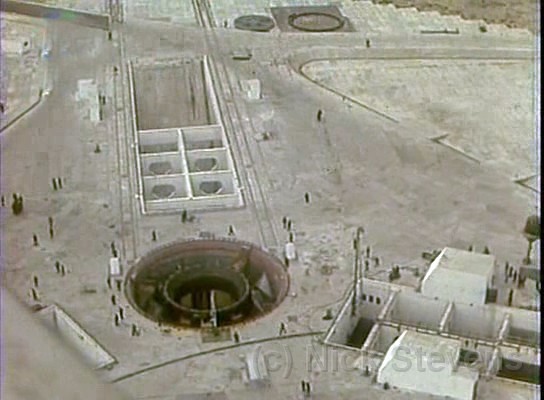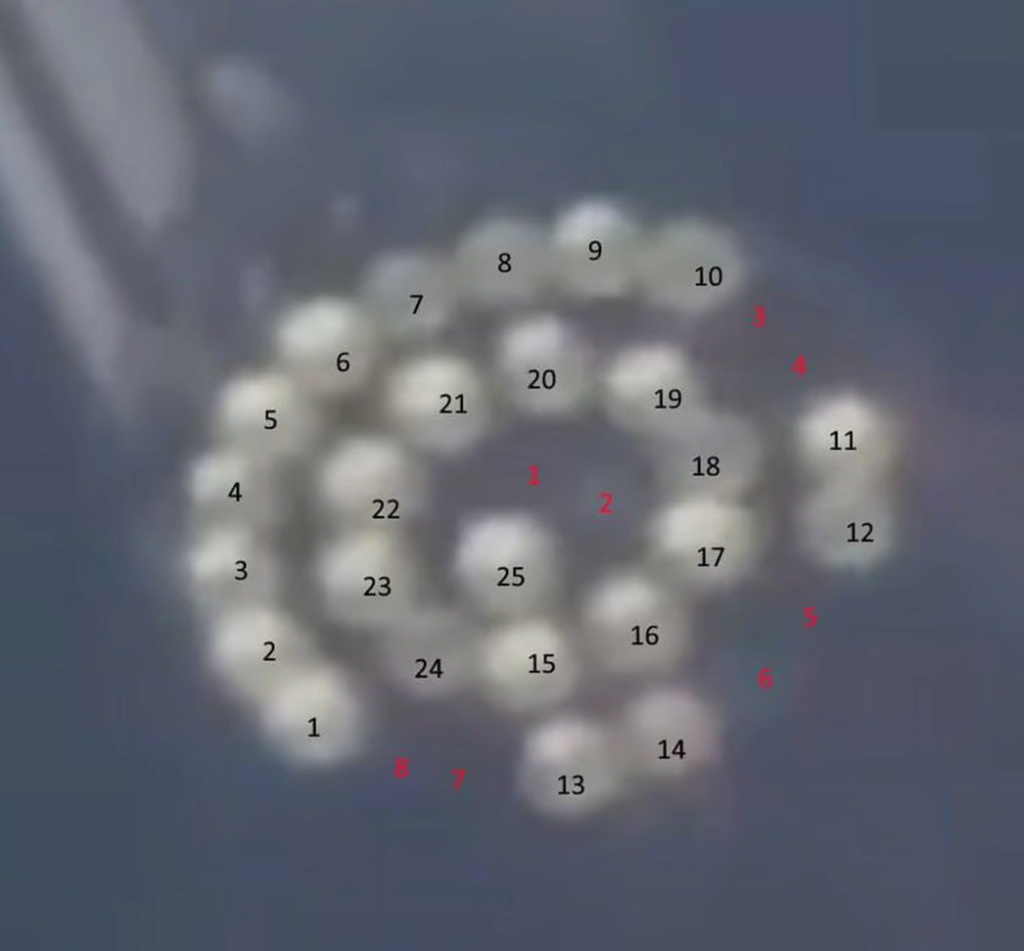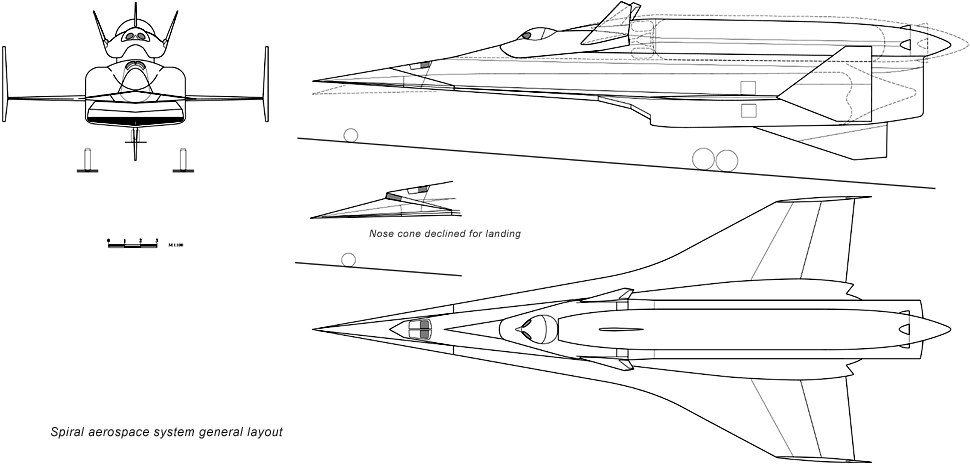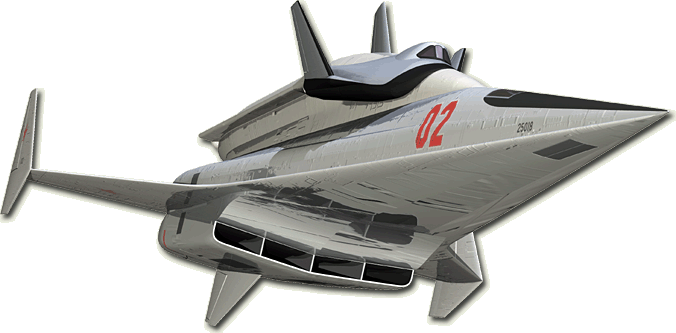Feel sorry for Musk , even if he sells starlink to Ukrs ? The design did not look right . More like stuffed sausage . He would have been better starting small ( er ) . The probability of fail goes higher with increasing number of Engines , even if stress per Engine is less . I could tell problem started at beginning . Lift- off was slow or delayed that allowed exhausts gas blow back against Engines . There was damage to Engine exhaust casing , visible by escaping hot gases . There is also symmetry to Engine fail , indicating problem perhaps with fuel pump , feeding opposite engines . Perhaps auto shut - down in case of fire . Then Rocket could not manoeuvre . Space too big for single company , or single nation or even single planet !
Russian Space Program: News & Discussion #4

nomadski- Posts : 3073
Points : 3081
Join date : 2017-01-02
Feel sorry for Musk , even if he sells starlink to Ukrs ? The design did not look right . More like stuffed sausage . He would have been better starting small ( er ) . The probability of fail goes higher with increasing number of Engines , even if stress per Engine is less . I could tell problem started at beginning . Lift- off was slow or delayed that allowed exhausts gas blow back against Engines . There was damage to Engine exhaust casing , visible by escaping hot gases . There is also symmetry to Engine fail , indicating problem perhaps with fuel pump , feeding opposite engines . Perhaps auto shut - down in case of fire . Then Rocket could not manoeuvre . Space too big for single company , or single nation or even single planet !
jon_deluxe likes this post

kvs- Posts : 15861
Points : 15996
Join date : 2014-09-11
Location : Turdope's Kanada
The launch video appears to show catastrophic failures of some of the engines. Either the quality assurance for the engines is crap or there is a design flaw
with the plumbing. So, no progress after over 50 years.
GarryB, xeno, Big_Gazza, nomadski and Belisarius like this post

Big_Gazza- Posts : 4908
Points : 4898
Join date : 2014-08-25
Location : Melbourne, Australia

Look at the vast flame trench system the Soviets built for N-1 by comparison to the measly SpaceX launch table. Thats how a real pad is designed and built.

Pundits claim this omission was a deliberate decision as the Starshit is "intended" to take off from the moon and Mars (
BTW good point from KVS. Korolev/Mishin didn't have sophisticated computer-based analytical tools to investigate complex fluid dynamics and structural/piping vibrational modes, so they had little choice but to fly missions to identify problems post-mortem. SpaceX has zero such excuse, and i find it astonishing that they didn't anticipate the damaging effects of reflected shock waves on liftoff.
GarryB, xeno, kvs, nomadski, owais.usmani, lancelot, Scorpius and like this post

owais.usmani- Posts : 1828
Points : 1824
Join date : 2019-03-27
Age : 38
Arkanghelsk wrote:Starship is a stupid concept
I am actually waiting for SpaceX to put people on that thing. That is when the real fun starts!
GarryB and Big_Gazza like this post

jon_deluxe- Posts : 15
Points : 17
Join date : 2021-08-08
You just know if it was a Russian or a Chinese rocket that exploded they'd lose no time making fun of them, saying that their technology is outdated, Soviet-era crap, or cheap, inferior copies of Western designs, respectively.
GarryB, flamming_python, xeno, Big_Gazza, kvs, Hole, owais.usmani and Belisarius like this post

GarryB- Posts : 40558
Points : 41060
Join date : 2010-03-30
Location : New Zealand
It is interesting that the Americans claim to worry about human life but it was Buran that had the crew escape module and the US Space Shuttles that didn't.
Big_Gazza, kvs, The-thing-next-door, Hole, jon_deluxe and Belisarius like this post

Big_Gazza- Posts : 4908
Points : 4898
Join date : 2014-08-25
Location : Melbourne, Australia
Does this sound like a practical transport system?
Furthermore, the Manned Dragon has its emergency crew escape rockets built into the capsule rather than on a jettisonable external tower like every single other manned space transport in history has done. The crew must go into orbit with 4x sets of hypergolic propellents on the other side of the pressure retaining bulkhead, and undergo the heat of re-entry hoping that these potential bombs don't leak and that the thermal protection of the rocket exhaust ports holds true... The test of the recovered LZ-1 capsule in 2019 resulted in explosion and catastrophic loss of the capsule that would have killed all occupants, but did SpaceX reconsider this bad design? Nope, they just pushed on and whitewashed the outcome rather than accept the delays of a re-design.
Yeah, I think its 100% safe to state that crew safety is not SpaceX primary consideration.
GarryB, kvs, The-thing-next-door, Hole, jon_deluxe and Belisarius like this post

Big_Gazza- Posts : 4908
Points : 4898
Join date : 2014-08-25
Location : Melbourne, Australia
It looks like Starshit lost at least 8 engines out of 32, probably more as the failure cascaded.

GarryB, xeno, kvs, Hole and jon_deluxe like this post

jon_deluxe- Posts : 15
Points : 17
Join date : 2021-08-08
xeno, Big_Gazza, kvs, ALAMO, GunshipDemocracy, Odin of Ossetia, thegopnik and like this post

lancelot- Posts : 3180
Points : 3176
Join date : 2020-10-17
I agree with him with regards to the pad, but I would not bet on the rocket design being ok either. Not when Musk claims this rocket will be reusable 100 times and there is plenty of evidence that the engines eat themselves up on each flight.
GarryB, Big_Gazza, kvs, GunshipDemocracy, zardof, Hole and owais.usmani like this post

Scorpius- Posts : 1576
Points : 1576
Join date : 2020-11-06
Age : 37
jon_deluxe wrote:It is surreal to see the press and large swathes of the internet lose their minds over a failed launch, celebrating over what was basically a failure like the ones that plagued the N1 program half a century ago. The unbridled jingoism is out of this world (unlike Musk's rocket)
You just know if it was a Russian or a Chinese rocket that exploded they'd lose no time making fun of them, saying that their technology is outdated, Soviet-era crap, or cheap, inferior copies of Western designs, respectively.
The N-1 rocket had 4 tests of FOUR prototypes. What is the number of the Starship and Super Heavy test we saw this time? Elon Musk, if he were in Korolev's place, would have already been shot as a diversionist and saboteur for monstrous embezzlement. By the way, 15 years have passed since the first successful launch (2008) of a SpaceX rocket into orbit. For comparison, this is as much as it took between 1957 and 1972. During this period of time, the USSR went from launching the simplest satellite PS-1 to launching such missions as Salyut-1, Luna-20, and Venus-8.
GarryB, Big_Gazza, kvs, Hole, owais.usmani, lancelot and jon_deluxe like this post

Hole- Posts : 11125
Points : 11103
Join date : 2018-03-24
Age : 48
Location : Scholzistan
They didn´t start from scratch, whole departments of NASA joined the company.By the way, 15 years have passed since the first successful launch (2008) of a SpaceX rocket into orbit.
GarryB, Big_Gazza, kvs, zardof and jon_deluxe like this post

Big_Gazza- Posts : 4908
Points : 4898
Join date : 2014-08-25
Location : Melbourne, Australia
GarryB, kvs, GunshipDemocracy, Hole and jon_deluxe like this post

Kiko- Posts : 3899
Points : 3975
Join date : 2020-11-11
Age : 75
Location : Brasilia
In Russia, work has begun on the creation of projects similar to Buran, by Kristina Tsytsura for VZGLYAD. 04.26.2023.
Borisov spoke about the conduct of research work to create projects similar to Buran.
Russia needs projects like the Soviet reusable return spacecraft Buran, research work is underway on this issue, said Yuri Borisov, Director General of Roscosmos, at the educational marathon “Knowledge. First."
According to the head of the state corporation, the projects are in a serious degree of practical implementation, TASS reports.
He added that such a project is now in demand, since only tens of kilograms of cargo can be returned from orbit. The problem of creating such a "shuttle" is the lack of finance.
https://vz.ru/news/2023/4/26/1209304.html
kvs, GunshipDemocracy, The-thing-next-door, Hole and jon_deluxe like this post

GunshipDemocracy- Posts : 6172
Points : 6192
Join date : 2015-05-17
Location : fishin on Stalin´s Strait between Mexico and Canada
Amur-SPG rocket stage can be used more than 50 times
The stage of the new reusable rocket "Amur-SPG" can be used more than 50 times
The design of the Russian reusable methane rocket Amur-SPG started in 2020 by order of Roscosmos . It should be a two-stage medium-class rocket, the first launch of which from the Vostochny cosmodrome was originally planned in 2026. The carrier must have a reusable (up to 10 times) returnable first stage, equipped with RD-0169 engines that run on oxygen and liquefied natural gas (methane).
https://ria.ru/20230426/raketa-1867945714.html
GarryB, flamming_python, Big_Gazza, kvs, Hole, Kiko and jon_deluxe like this post

GunshipDemocracy- Posts : 6172
Points : 6192
Join date : 2015-05-17
Location : fishin on Stalin´s Strait between Mexico and Canada
Borisov said that Russia will use a nuclear tug in a joint project with China
https://tass.ru/kosmos/17619395
The head of Roscosmos explained that the tug will allow large objects to be delivered from near-earth to near-lunar orbit
MOSCOW, 26 April. /TASS/. The nuclear tug "Zeus" will be involved in a joint project with China of the international scientific lunar station. This was announced on Wednesday by Director General of Roscosmos Yuri Borisov at the educational marathon "Knowledge. First".
“We have a nuclear tug called Zeus. We are going to put it into practice by 2030. This is one of the products that will help in the expansion of the moon, we are going to use it in a joint project with China,” Borisov said.
According to the head of Roskosmos, the tug will allow large objects to be delivered from near-Earth to near-lunar orbit.
According to Borisov, China is interested in Russian rocket engines.
“We have an agreement with China on the creation of an international scientific lunar station, we are actively working. They are interested in our competencies in engines, they really want to get them and figure out how they are made in order to repeat them,” Borisov said.
According to the head of the state corporation, the Russian Federation has such relations with India, Roscosmos helps in organizing the first flight of a manned spacecraft into orbit.
At the end of 2022, Roscosmos announced the signing of a program for the development of cooperation in space activities for 2023-2027 with the Chinese National Space Administration (CNSA). In addition, the governments of Russia and China signed a cooperation agreement on the creation of an international scientific lunar station, the roadmap of which was presented in June 2021. According to the information provided, the construction of the station should be fully completed by 2035.
GarryB, flamming_python, Big_Gazza, kvs, Hole, owais.usmani and jon_deluxe like this post

GarryB- Posts : 40558
Points : 41060
Join date : 2010-03-30
Location : New Zealand
Rocket motors generate lots of high powered high velocity thrust and were really the only option for anything flying faster than mach 4 or more.
But now they have working scramjets they get essentially rocket motor thrust from a jet engine where the air can be scooped up as the vehicle travels through the air.
The options to replace the rocket motors with scramjets for certain parts of the flight would be rather interesting in terms of reducing weight of the entire platform.
kvs likes this post

GunshipDemocracy- Posts : 6172
Points : 6192
Join date : 2015-05-17
Location : fishin on Stalin´s Strait between Mexico and Canada
GarryB wrote:
But now they have working scramjets they get essentially rocket motor thrust from a jet engine where the air can be scooped up as the vehicle travels through the air.
The options to replace the rocket motors with scramjets for certain parts of the flight would be rather interesting in terms of reducing weight of the entire platform.
but dual system gets more complicated. The question is whether benefits outweigh drawbacks. Imagine descending you need to have extra weight to rocket boosters on orbit. And extra ablative protection. Let's see how the situation develops.

GarryB- Posts : 40558
Points : 41060
Join date : 2010-03-30
Location : New Zealand
In orbit your flight speed determines the altitude you orbit at, so say 10km/s gets you to a 30K km altitude you can fly through the atmosphere and accelerate to say 8km/s and then point your nose at a slightly upward angle and physically climb to say a 2k km stable orbit.
If you are in a stable 2k km orbit you can go higher by accelerating in you current direction of travel... when you reach 11km/s you can leave earth orbit completely... if you slow down in your direction of travel your orbital height is reduced.
If you are in a stable orbit and you want to climb to a higher you can't just point your nose away from the planet and fire a rocket to climb, because your orbital speed stays the same in your flight around the planet so you will climb but then you will fall back down past where you climbed from and bobble back and forward until you settle back to the same orbital height you were at before.
To climb you accelerate in your orbit to a higher orbital speed and you will start to gain distance from the planet and maintain that distance.
With a combined rocket/scramjet you can use the scramjet inside the atmosphere scooping up air as you go to burn the fuel meaning you save more than 75% of the weight of fuel and oxygen you need to carry. When you first lift off from the ground you will need oxygen pumped into the combustion chamber to get moving.
For a smaller spaceship you could be carried on the back of a Slon transport plane flying at 10km altitude at 700km/h when you are released and start up your scramjet to accelerate and perhaps climb to 30km altitude and then accelerate up to orbital speed... climb up out of the atmosphere... once you reach orbital speed and are out of the drag of the atmosphere then you should naturally climb to the orbital altitude that your speed allows you to maintain.
Then you can use your scramjet as a rocket thruster using some onboard liquid oxygen... or later perhaps if they can get powerful enough a ion thruster for in space to accelerate (climb) or decelerate (descend or reenter the atmosphere).
Not enough oxygen on Mars for use of a scramjet though.
And obviously you need to design a scramjet that runs up to orbital speed which is not easy of course... but the potential is enormous.
kvs likes this post

GunshipDemocracy- Posts : 6172
Points : 6192
Join date : 2015-05-17
Location : fishin on Stalin´s Strait between Mexico and Canada
GarryB wrote:But that is the thing, you could have variable rocket scramjets.... use oxygen in the first 30 seconds of flight and then let air intakes take over to provide the oxygen for burning the fuel in the atmosphere.... use a flatter trajectory to make the climb to orbit more shallow and then when you accelerate to an orbital speed that will hold you out of the atmosphere then zoom climb up to it.
[]
And obviously you need to design a scramjet that runs up to orbital speed which is not easy of course... but the potential is enormous.
Theoretically it's almost possible
Can you use a carrier plane? sure you can but there's no working solution so far...I guess there are reasons why.
Can you build a hybrid system with scramjet rocket and ion engines? you can but but probability of failure is so high that none is even considering it in practice. Perhaps in the future when technology advances?

Big_Gazza- Posts : 4908
Points : 4898
Join date : 2014-08-25
Location : Melbourne, Australia




The problem I see however is that while such could be a good low-cost launcher for small to medium payloads, development costs would be high, given that its essentially a hypersonic manned bomber with a satellite launcher on its back.
GarryB, kvs, Odin of Ossetia, Hole and jon_deluxe like this post

GarryB- Posts : 40558
Points : 41060
Join date : 2010-03-30
Location : New Zealand
Theoretically it's almost possible Smile almost. Theoretical top speed for scramjet is ~25000km which is less the low orbit 28000 by 3000km/h
Well obviously getting to 25Kkm/h by scramjet will save massively on fuel weight because it means you don't need to carry three times the weight of your fuel in oxygen to get to that speed.
As I said a combined rocket scramjet you could get to the theoretical 25Kkm/h and then start injecting oxygen into the scramjet, essentially making it a rocket for the last acceleration to orbital speed and then shutdown.
Once in orbit you shut down the rocket/scramjet and use an ion engine to accelerate to any speed you want.
Can you use a carrier plane? sure you can but there's no working solution so far...I guess there are reasons why.
At the moment the options are limited... the An-124 has been proposed for all sorts of rockets and the An-225 would be useful, but as they are designing and building new heavy transports around the PD-35 engines the Slon aircraft modified with an H tail for large bulky loads on its back would be ideal to carry a small shuttle with a large fuel tank... the shuttle wont need to be as heavy as the Buran at about 110 tons and with a rocket scramjet instead of just a rocket it would only need a fraction of the weight of fuel.
Later a scramjet powered platform can be developed to accelerate to much higher altitudes and flight speeds for release.
Can you build a hybrid system with scramjet rocket and ion engines? you can but but probability of failure is so high that none is even considering it in practice. Perhaps in the future when technology advances?
If the US had working scramjets of course they would be working on it, but they don't.
A combination of Scramjets and Ion engines will be the future of space access... a carrier aircraft to get it airborne or a rocket with wings to return to an airfield after launch and then a scramjet to near orbital speed and then slush hydrogen fuel pumped into the scramjet for the last little push to get into orbit... once in orbit and out of the atmosphere then an ion engine would be the most efficient way to move around... if not particularly fast... very efficient.
The problem I see however is that while such could be a good low-cost launcher for small to medium payloads, development costs would be high, given that its essentially a hypersonic manned bomber with a satellite launcher on its back.
Who doesn't want to travel from Russia to South America in three hours?
Scramjets are jet engines and should not be as one use and fuel expensive as a rocket.
Up until recently the problem was we were using ramjets and not scramjets so the upper speed limits were mach 4 to mach 5 for the carrier platform.
With mature scramjet motors you can scale them up like jet engines and in terms of fuel demand they are probably more than a turbojet, but vastly less than a rocket and that increased fuel burn is countered by the fact that you are moving much much faster so the cost per km is probably not going to be too bad... probably Tu-144 to start with, but could come down... certainly Tu-144 like planes would become more affordable too... for shorter hops like one side of Russia to the other.
Can you build a hybrid system with scramjet rocket and ion engines? you can but but probability of failure is so high that none is even considering it in practice. Perhaps in the future when technology advances?
The core necessary technology is the scramjet, which they have obviously worked out for little missiles... how that translates to a larger platform and all the heat issues that creates is another matter.
Essentially supersonic flight needed the Turbojet, but eventually the low bypass Turbofan and indeed the ramjet made it affordable for military aircraft.
Scramjets will make supersonic flight affordable for civilian aircraft and commercial aircraft and will be a huge step forward for space access.
Converting space ports into big airports opens up more options and needing rather less liquid oxygen per litre of propellent makes things safer... if not safe.
Big_Gazza and kvs like this post

Big_Gazza- Posts : 4908
Points : 4898
Join date : 2014-08-25
Location : Melbourne, Australia
kvs likes this post

GarryB- Posts : 40558
Points : 41060
Join date : 2010-03-30
Location : New Zealand
This means a scramjet has massively more thrust at speeds approaching and exceeding the speed of sound.
A single turbojet that gets the aircraft airborne and flying could be used for takeoff and landing while in flight the intake for a central turbojet could close and the intakes for two or more scramjets could open with the scramjets starting up and accelerating the vehicle to top speeds... the airflow through a scramjet is much denser than with other types of jet engine because it does not need to be slowed down so even a rather small scramjet can deliver enormous thrust.
In the 1990s the Russians tested a small scramjet mounted on the nose of an SA-5 surface to air missile... the missile was launched and climbed to altitude and its solid rocket boosters fell away and the main rocket motor started up and accelerated the missile to mach 5 and quite high altitude of about 18km I seem to remember.
Then the nose mounted scramjet motor was started up and accelerated the entire missile to mach 6 and burned for about 2 minutes... during which the missile travelled just under 200km.
As you can see the nose mounted scramjet (early model) is actually rather tiny and with the solid rocket boosters gone the rest of the missile was quite a large load to carry for the engine... the fuel for the scramjet was located in the warhead and guidance section of the missile, but of course unlike the main rocket motor it only needed fuel... it did not need an oxidiser, so by weight 300kgs of fuel for the scramjet is the equivalent of 1.2 tons of fuel needed for a rocket motor to do the same thing.
The newer scramjets can go faster than mach 6 of course and will be different in that they have square or rectangular air intakes to make the airflow easier and simpler to control to ensure the fuel is burned even at supersonic speeds.
Big_Gazza, kvs and jon_deluxe like this post

Big_Gazza- Posts : 4908
Points : 4898
Join date : 2014-08-25
Location : Melbourne, Australia
Indulging in speculation, I'd expect any such practical hypersonic vehicle to be quite large, likely as big as a Tu-160 (purely a guesstimate on my part) so getting it airborne and at an airspeed where the engines can start to operate will require a significant subsonic powerplant. It would require internally-mounted turbojets (or detonation engines) for minimal space requirement and high thrust (no bypass results in low efficiency but it isn't important for short running duration). Probably require variable geometry lifting surfaces to maximise lift at low takeoff speeds and thereby reduce the size of the takeoff engines.
BTW in its last tests the Kholod program was partly funded by NASA, and they have a publically-available document describing the vehicle - https://ntrs.nasa.gov/citations/19980137604
Good info for those interested in this subject.
GarryB, kvs and jon_deluxe like this post



 owais.usmani
owais.usmani